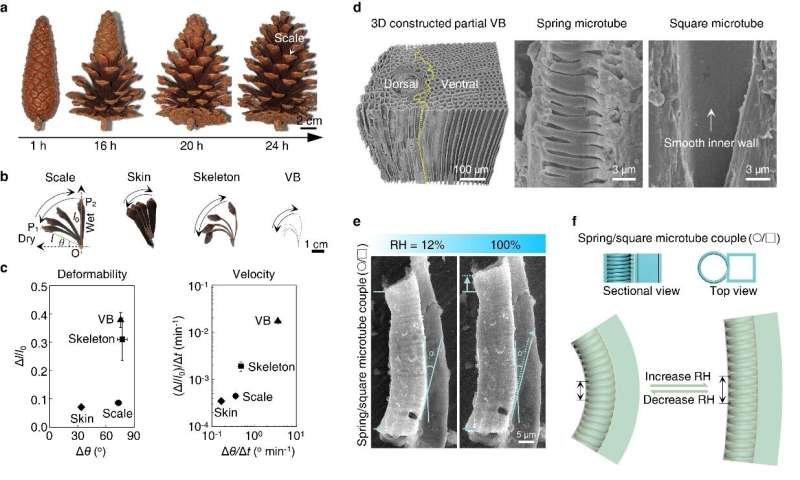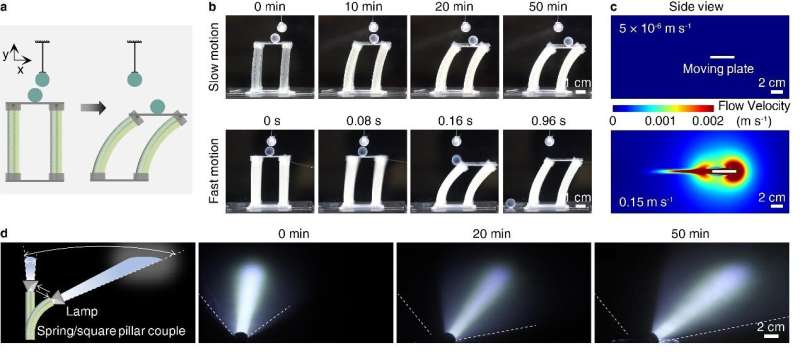Researchers reveal secret of ultra-slow motion of pine cones

In a study recently published in Nature Materials, Prof. Wang Shutao from the Technical Institute of Physics and Chemistry (TICP) of the Chinese Academy of Sciences (CAS) and Prof. Liu Huan from Beihang University revealed the secret of ultra-slow motion of pine cones and developed mimicking actuators enabling unperceivable motion.
Responsive actuators have attracted extensive attention by virtue of their great potential applications in flexible robotics, sensors, energy conversion and other fields. Pine cones are a well-known bionic model for constructing artificial actuators.
However, little attention has been paid to the fact that the hygroscopic motion of pine cones is an ultra-slow process. Hygroscopic deformation has long been attributed to the uneven hygroscopic expansion of vascular bundles (VBs) and sclereids, controlled by their different microfibril orientations. The mechanism cannot explain the observation that VBs themselves are capable of reversible hygroscopic motion. Therefore, the mechanism of ultra-slow motion in pine cones has long been unclear.
In this work, the researchers revealed that VBs are composed of unique parallelly arranged spring/square microtubes forming heterostructures. The spring microtubes show much larger hygroscopic deformation than do square microtubes along the longitudinal axis direction. This deformation bends the VBs and consequently drives the scales to move as humidity changes.

In addition, the soft outer sclereids, which have good water retention, slow down the VB-triggered motion without compromising motion amplitude.
Drawing inspiration from this observation, the researchers prepared one-dimensional (1D) heterostructured spring/square pillars filled with a hygroscopic polymer to mimic the skin in the scales, which increases the water diffusion path and decreases the overall expansion velocity. With the spring/square pillars as basic units, they developed soft actuators enabling controllable yet unperceivable motion, which is two orders of magnitude slower than motion enabled by other reported actuators.
"This study offers deep insight into understanding the well-known hygroscopic deformation of the pine cone and other plant tissues capable of moving, but also into developing stimuli-responsive actuators that enable motion to proceed extremely slowly and unperceivably," said Prof. Wang.
They envision such actuators enabling ultra-slow motion for use in various camouflage and reconnaissance applications, according to Prof. Liu.
More information: Feilong Zhang et al, Unperceivable motion mimicking hygroscopic geometric reshaping of pine cones, Nature Materials (2022). DOI: 10.1038/s41563-022-01391-2
Journal information: Nature Materials
Provided by Chinese Academy of Sciences





















